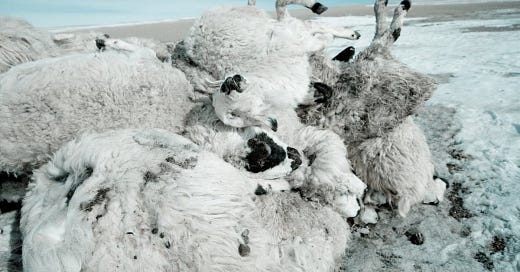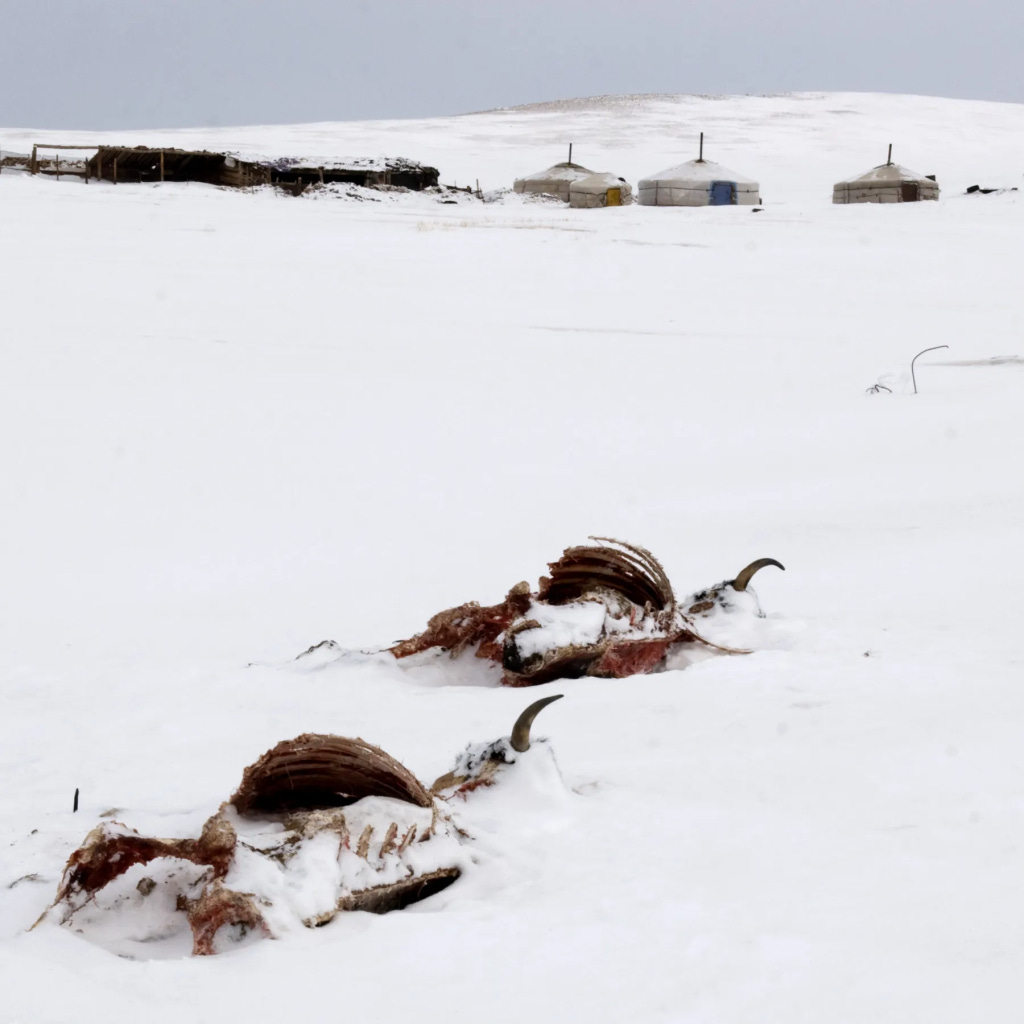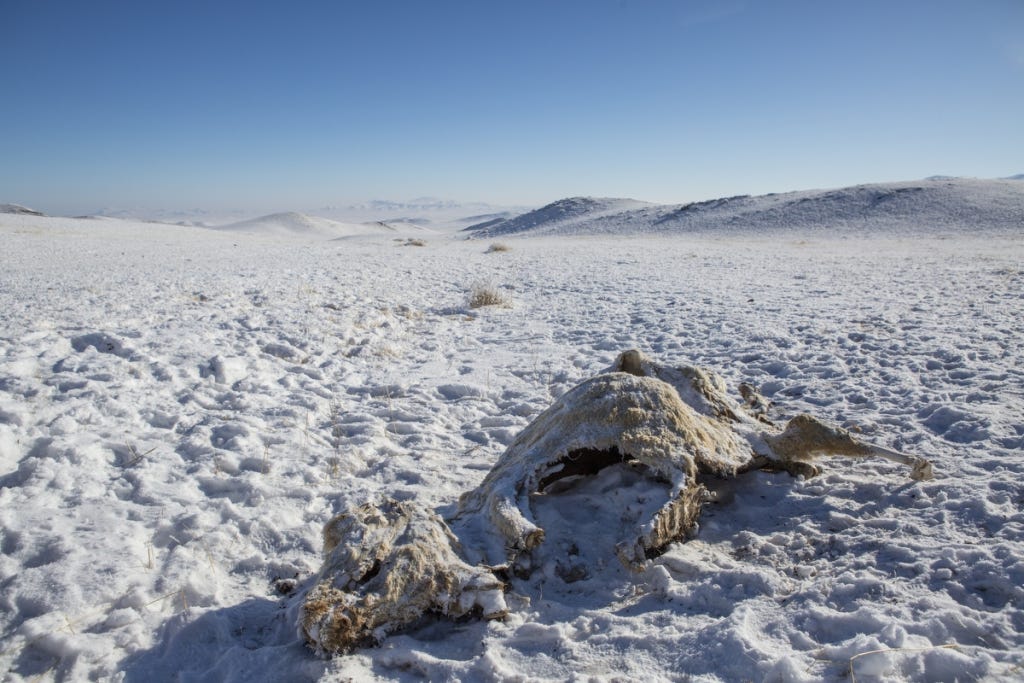90% of Mongolia At "High Risk" Of Dzud; Powerful Nor-Easter Takes Aim; Cold Pakistan; Northern Hemisphere Snow Mass Above 1982-2012 Average; + M9 Solar Flare
The COLD TIMES are returning...
90% of Mongolia At "High Risk" Of Dzud
The ongoing “white and iron” dzud in Mongolia has reached a “critical” level, with over 90% of the country facing high levels of risk from the unique phenomenon, so reads a recent report from the United Nations—no less.
A natural weather event where heavy snow and extreme cold result in insufficient grazing for livestock, dzuds have been on the rise in Mongolia during the past decade which jars with establishment caterwaulings of 'global boiling'.
This year, almost 200,000 herder households are struggling with inadequate feed, skyrocketing prices and heightened vulnerabilities, continues the UN report, due to the unprecedented wintry conditions.
"The increasing severity of weather conditions further exacerbates the crisis, underscoring the urgent need for humanitarian assistance and sustainable solutions to support Mongolia's rural communities and traditional livelihoods," the Office of the UN Resident Coordinator in Mongolia wrote this week.
This is an intensifying freeze — 90% of the country is affected in 2024, following 70% last year.
For years now, Mongolia's winters has been intensifying. Between 1940 and 2015, official dzud declarations were made twice a decade. In recent years, however, dzuds have increased in frequency with occurrences now happening annually.
The deadly winter of 2022-23 resulted in herder families enduring unprecedented levels of misery including severe food shortages, warned Save the Children. Even into May 2023, some 13 of Mongolia’s 21 provinces were still suffering a dzud.
Temperatures below -40C (-40F) were an all-too regular feature in 2023, cold which resulted in the untimely deaths of a million animals due to either starvation or freezing. This misery, in turn, was felt by the hundreds of thousands of Mongolian households who make their income from herding goats, sheep, cattle, horses, yaks and camels.
And with the 2023-24 winter season commencing ahead of schedule (with a big freeze in early-Nov killing eight herders, including a 12-year-old boy who perished helping his family tend to their herds amidst fierce snowstorms), the trend of cold is continued.
The UN describes dzuds as "a peculiar slow-onset disaster unique to Mongolia, are extreme winters characterized by freezing temperatures, heavy snow and ground so frozen that animals cannot reach pasture — and they're an increasing phenomenon."
A “white” dzud is marked by a very deep snow cover preventing animals from accessing grass. An “iron” dzud is a short thaw and subsequent hard freeze that locks up pastures in ice. The "white and iron" combo is also increasing in regularity.
Unsurprisingly, while the UN freely admit that the frequency and intensity of dzuds have been increasing since 2015, they tag the blame for this trend on the "worsening impacts of climate change and poor environmental governance": warming = cooling.
Propaganda is propaganda, let's accept it as such, but the UN's own article trips them up, the truth gets in the way:
"This winter, the dual “white” and “iron” dzud is marked by a very deep snow cover preventing animals from accessing grass (white dzud) combined with a short thaw and subsequent hard freeze that locks up pastures in ice (iron dzud)."
And with regards to the impacts: "Over 258,000 people —including over 100,000 children— have been affected as roads have been obstructed by heavy snow, leaving children unable to access vital health, nutrition, education and social services."
There is no way the computer models called for a cooling Mongolia (all 1.564 million km² of it), yet the nation's intensifying dzuds are being flipped as further proof of the 'climate crisis'.
Tellingly, Mongolia's clear and obvious cooling isn't revealed in the official temperature data. Inexplicably, the data show warming 'at twice the rate of the global average', no less.
This again exposes the very poor global station coverage and the "adjusting" it affords the likes of NOAA:
I'll leave you with the words of one herder based in western Mongolia, named Delgerbat, who recently had to take his son out of school to help him care for the family’s livestock.
"The climate is very different from when I was a child," said Delgerbat last May. "When I was young the snow would have melted by this time and it would already be spring, but now spring comes so late."
Keep reading with a 7-day free trial
Subscribe to Electroverse Substack to keep reading this post and get 7 days of free access to the full post archives.







